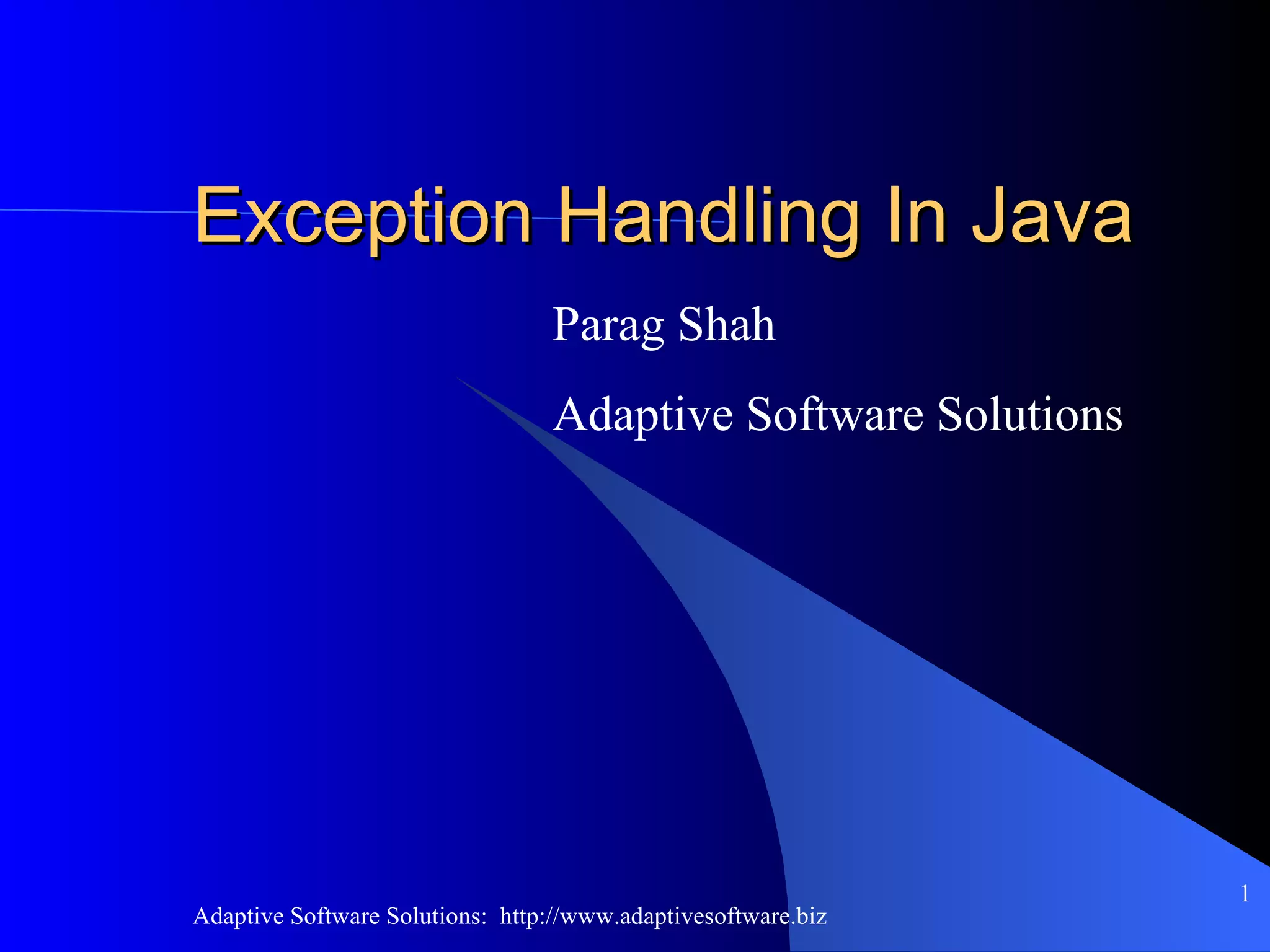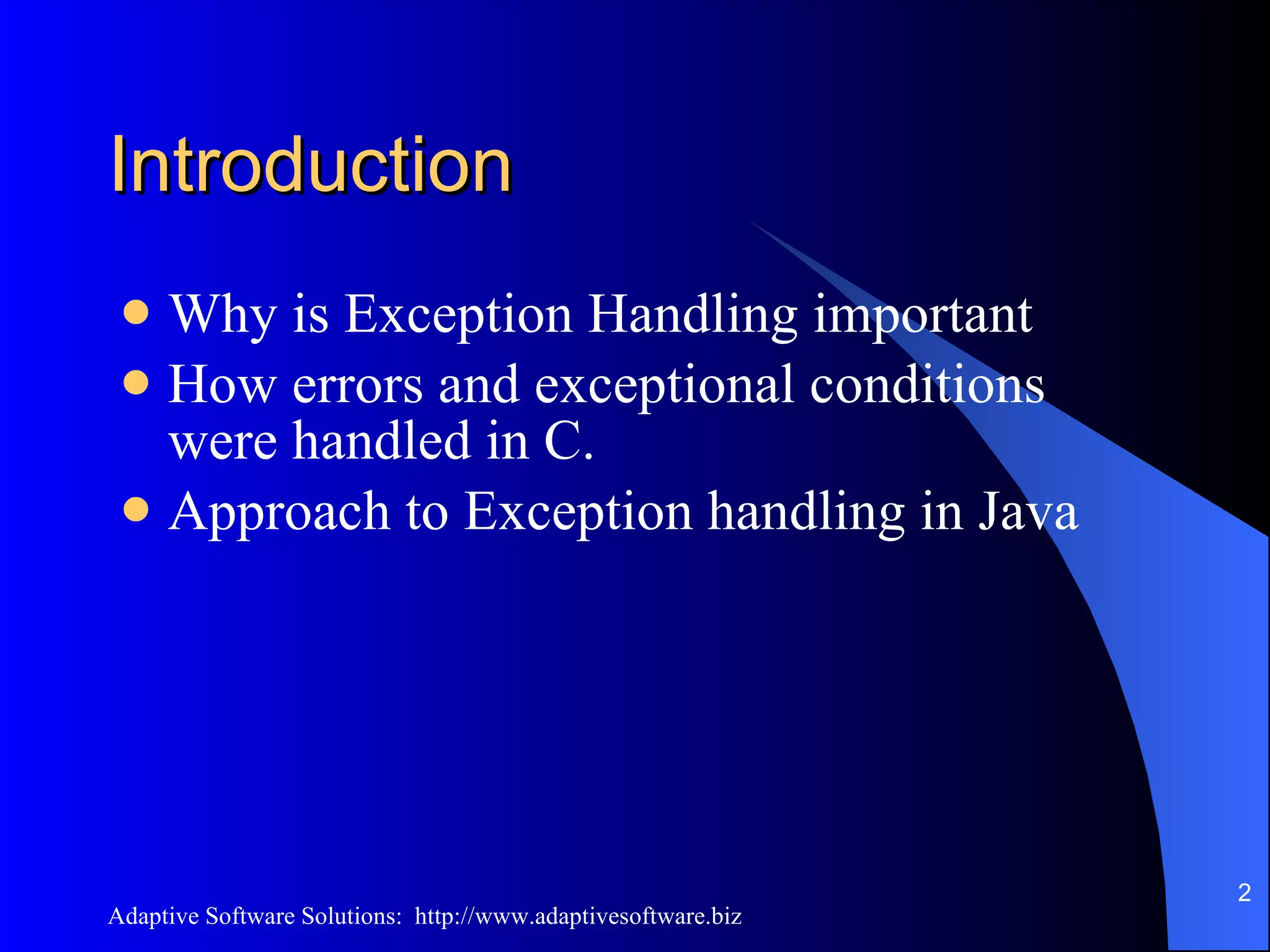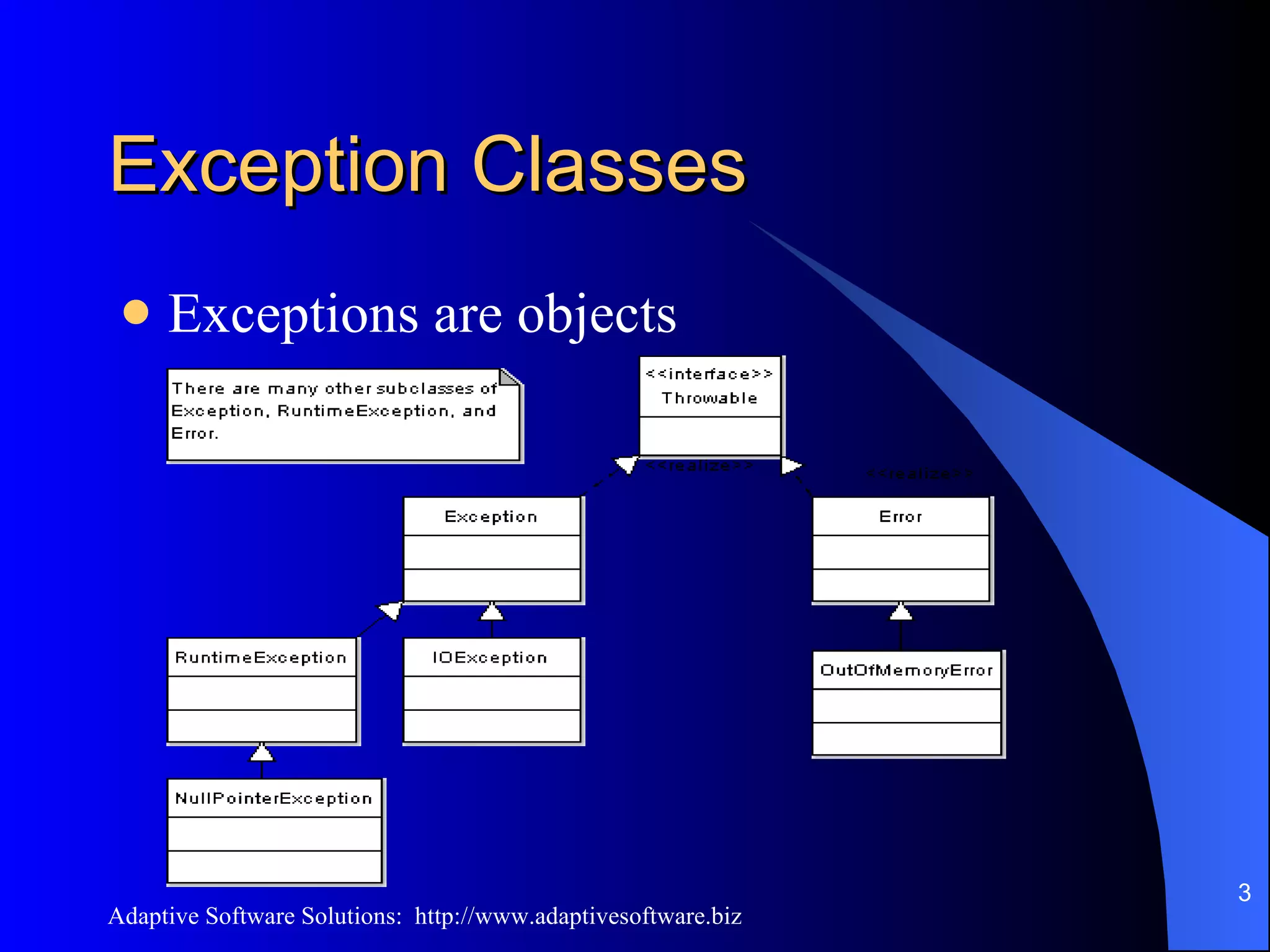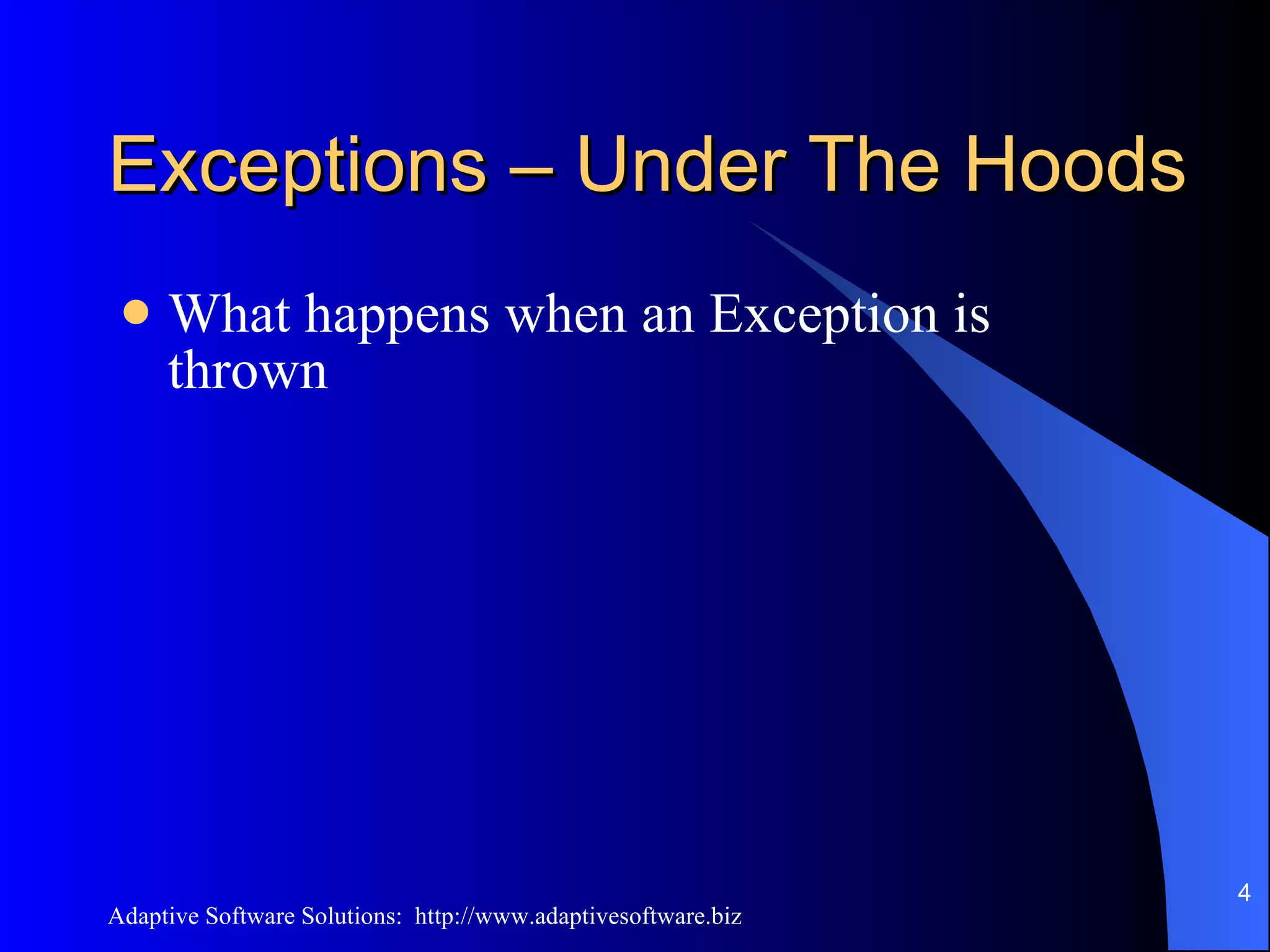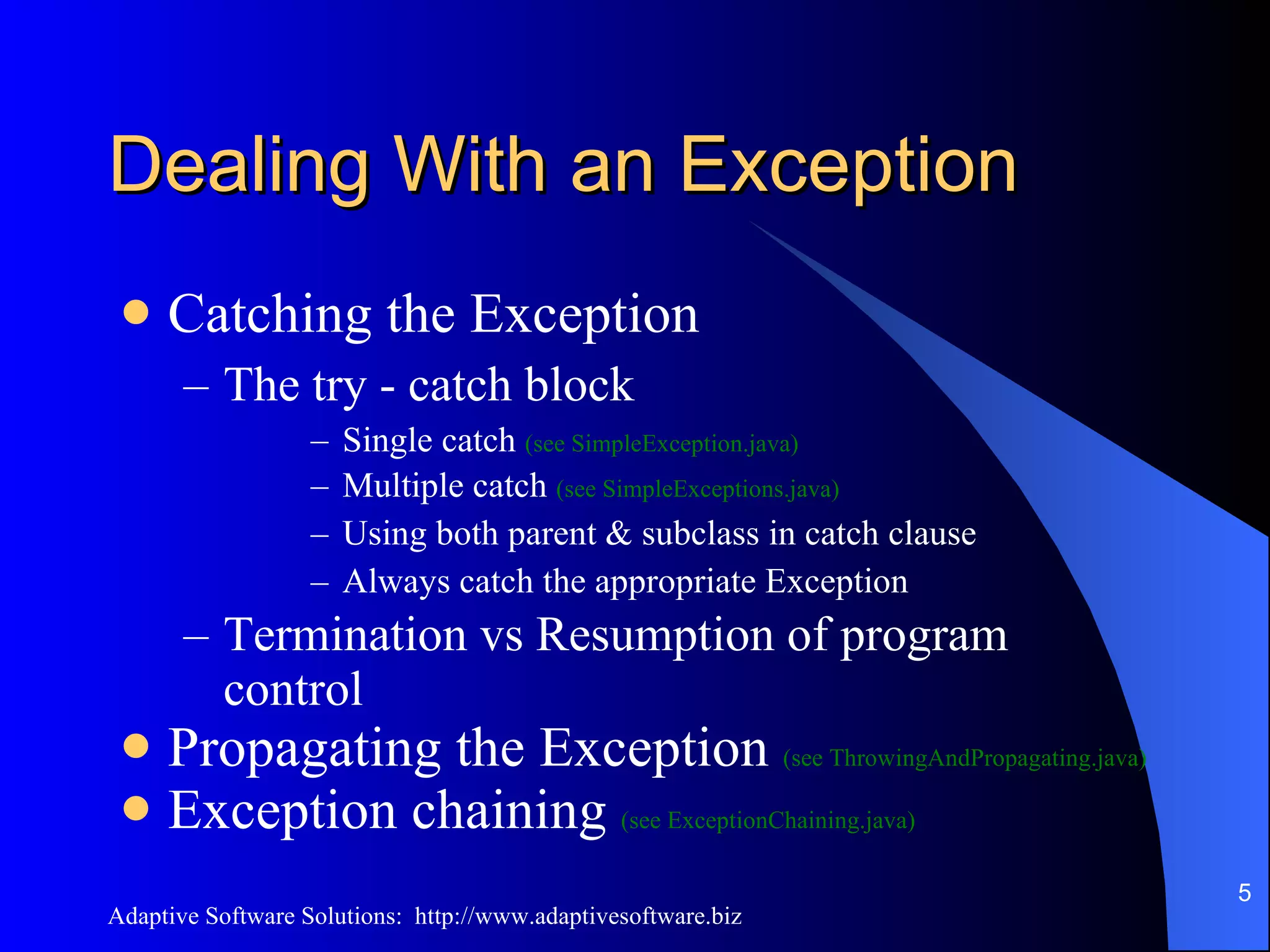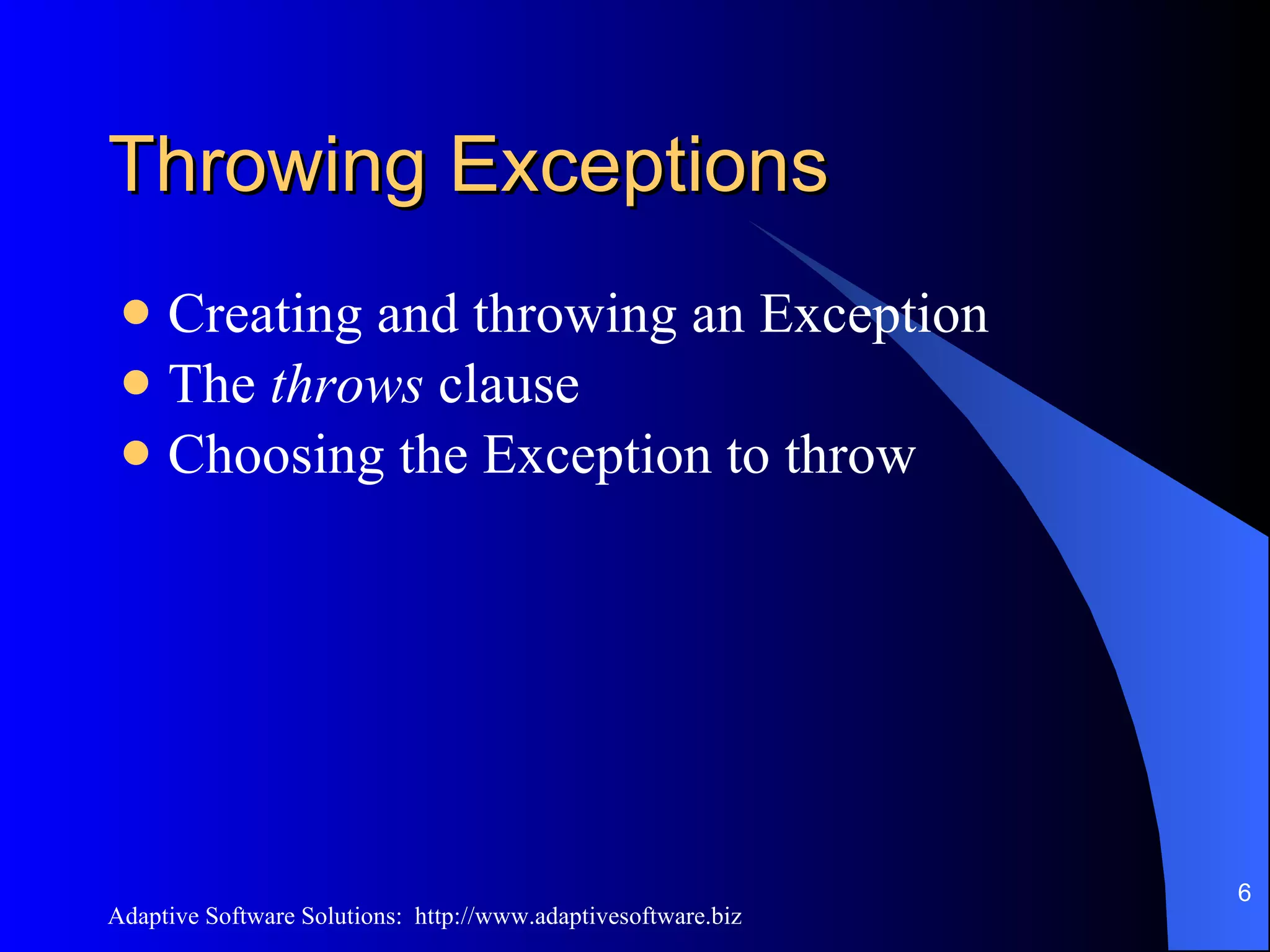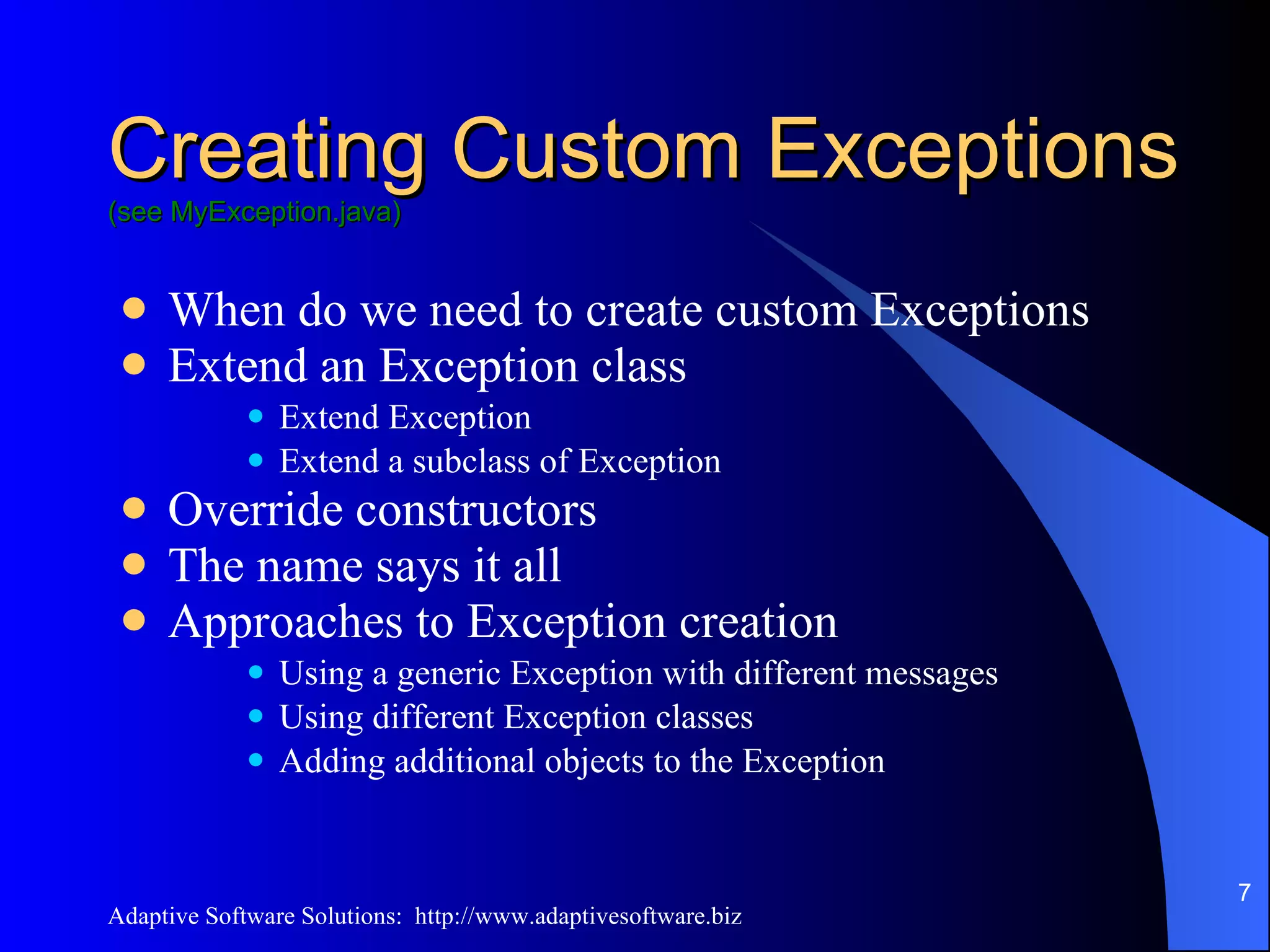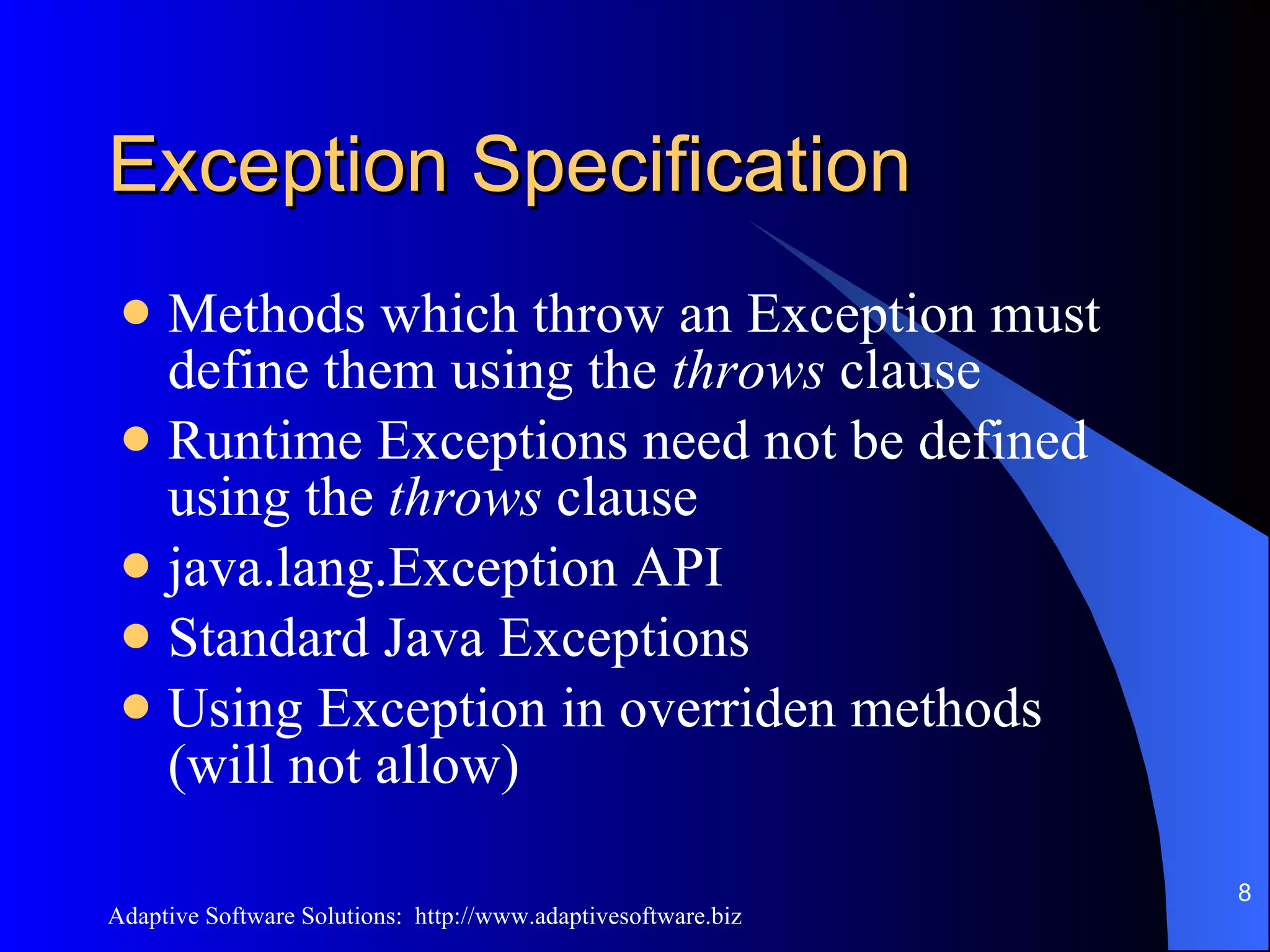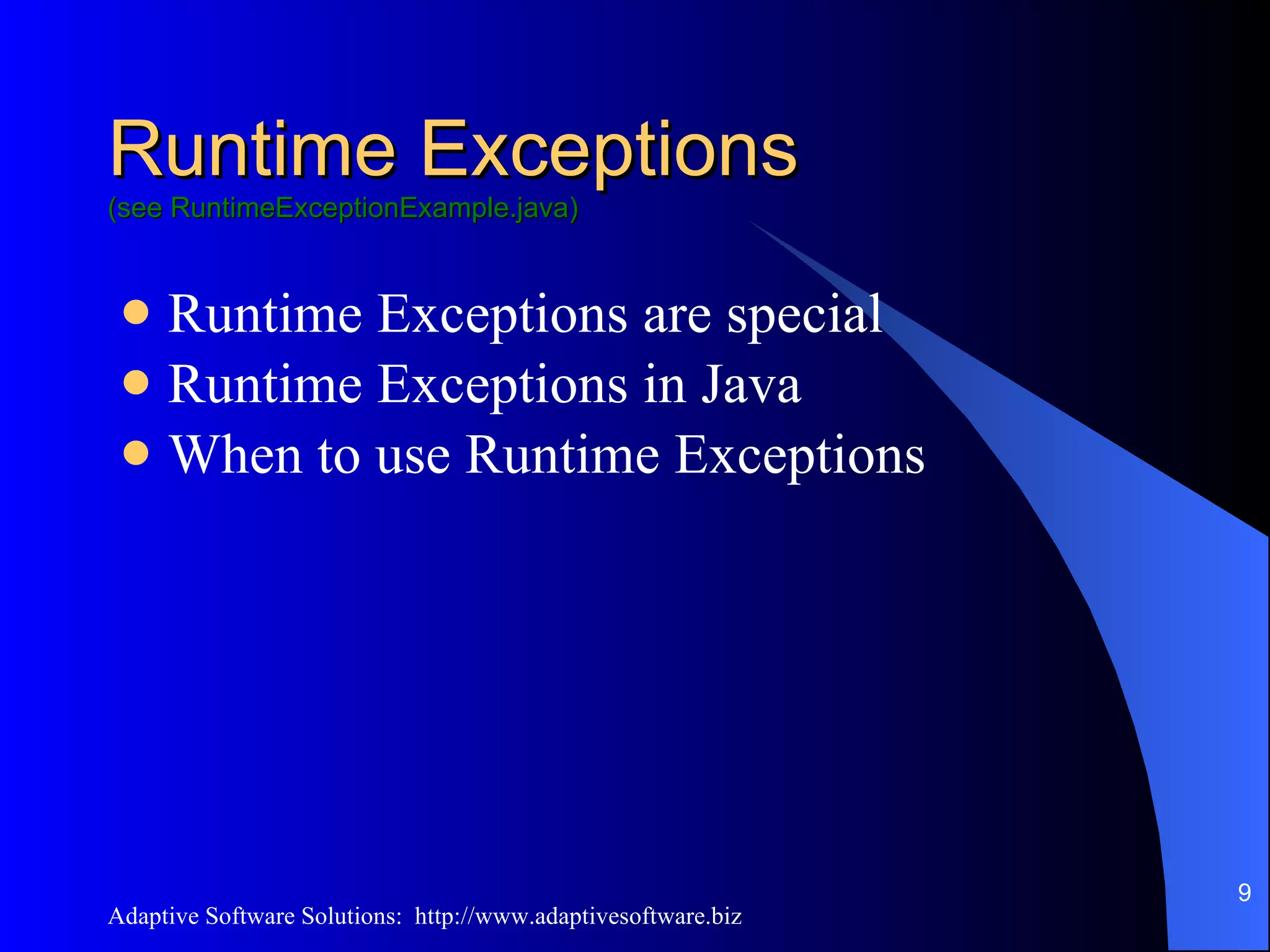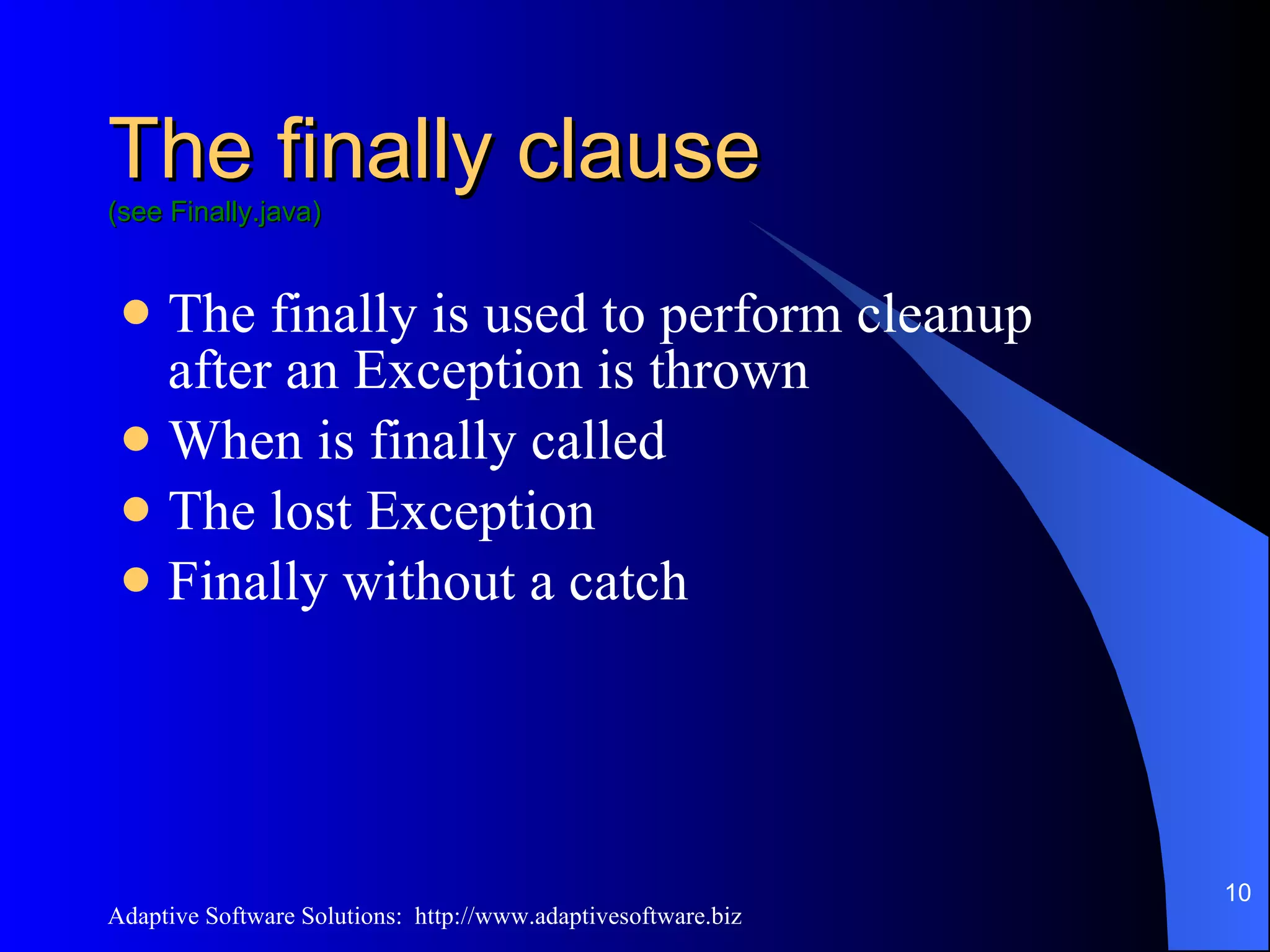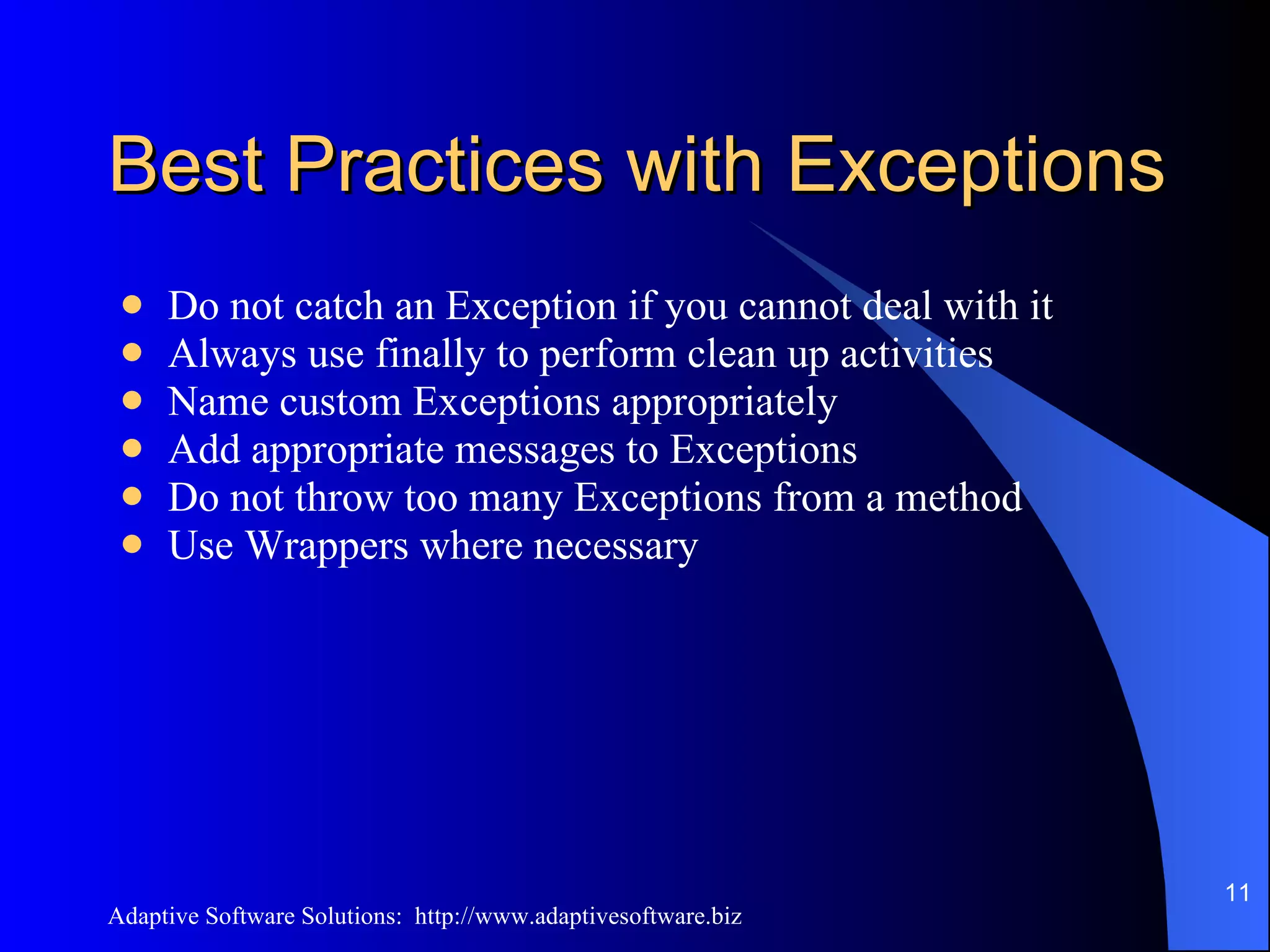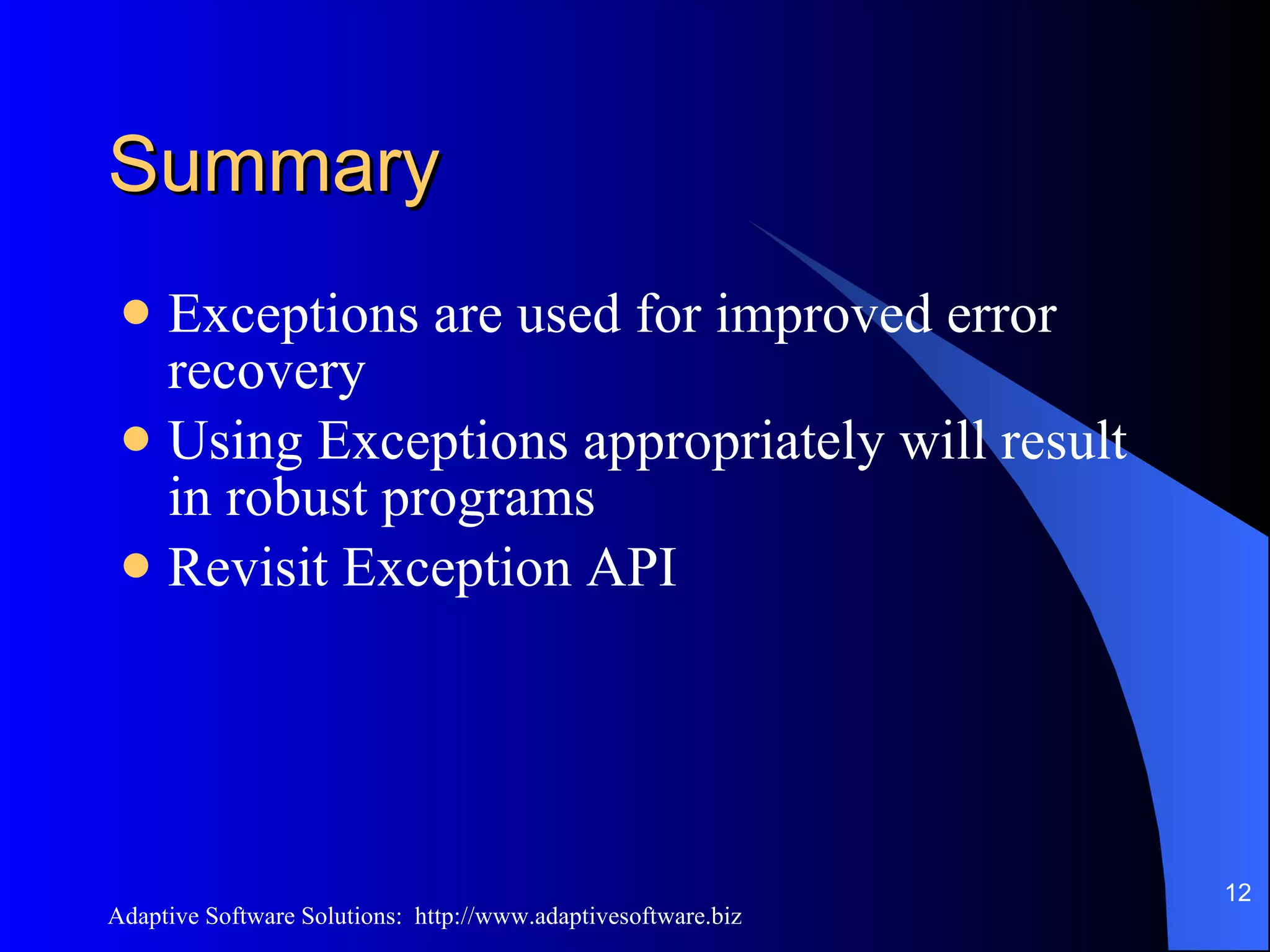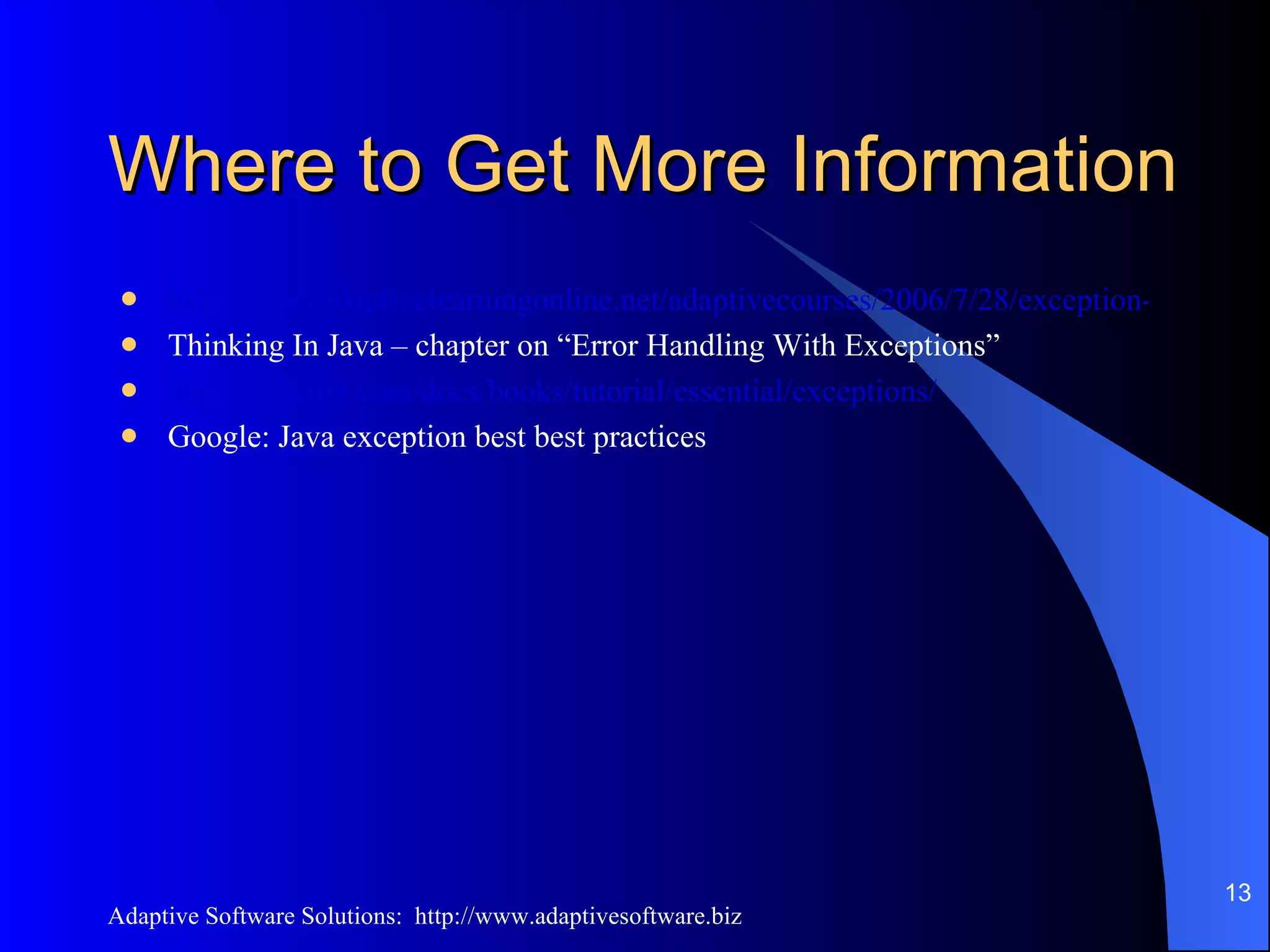This document discusses exception handling in Java. It covers key concepts like exception classes, throwing and catching exceptions, creating custom exceptions, and best practices. Exception handling allows programs to gracefully deal with errors and exceptional conditions. The try-catch block is used to catch exceptions, and exceptions can be propagated or chained. Methods that throw exceptions must specify them using the throws clause. Finally blocks are used to perform cleanup code regardless of exceptions.
